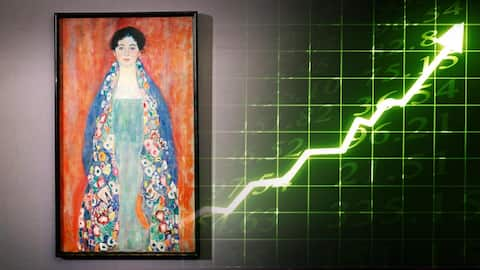Gustav Klimt's long-lost masterpiece auctioned for $32 million
What's the story
A long-lost masterpiece by renowned Austrian artist Gustav Klimt, titled "Portrait of Fräulein Lieser," has been auctioned for a staggering $32 million (₹2,656,000,000). The artwork, which had not been seen for nearly a century, was believed to be among Klimt's final works. This painting has created a considerable buzz in the art community around the world.
Auction details
The bidding began at $30 million
The bidding for Klimt's "Portrait of Fräulein Lieser" began at $30 million. This was notably lower than its pre-auction estimate, which ranged from $32 million to $53.4 million. The sale price also fell short when compared to another Klimt painting, "Dame mit Fächer" (Lady with a Fan), which fetched $108.4 million (₹89,952,000,000) last year in London.
Art discovery
The painting was considered lost for many years
The "Portrait of Fräulein Lieser" was considered lost for many years until it was discovered in the private collection of an Austrian citizen. The Vienna-based auction house im Kinsky described the rediscovery as a "sensation" in a press statement on its website prior to the sale. The vibrant and colorful artwork had been documented in catalogues of Klimt's work but had only been seen by experts in a black and white photograph.
Subject mystery
Who was the subject of Klimt's portrait?
The subject of Klimt's portrait is believed to have been from a wealthy Austrian Jewish family, part of Vienna's high society where Klimt found his patrons. Catalogues suggest that Adolf Lieser commissioned the painting of his teenage daughter Margarethe Constance. However, recent research indicates that Justus' wife, Lilly, may have hired Klimt to paint one of their two daughters. The exact identity remains uncertain.
Art history
The painting was still in Klimt's studio when he died
According to the auction house, the sitter visited Klimt's studio nine times in April and May 1917, with the artist making at least 25 preliminary studies before likely starting the painting in May of that year. When Klimt passed away in February 1918, the painting was still in his studio with some small parts unfinished. The artwork was then given to the Lieser family. Its exact location after 1925 remains unknown until its rediscovery in a private collection.
Art restitution
Painting sold on behalf of its anonymous Austrian owners
The painting was sold on behalf of its anonymous Austrian owners and the legal successors of Adolf and Henriette Lieser, following an agreement in line with the Washington Principles of 1998. These principles were established to return Nazi-confiscated art to their rightful owners. Claudia Mörth-Gasser, a specialist in modern art at im Kinsky, stated that they thoroughly checked the painting's history and provenance "in all possible ways in Austria."
